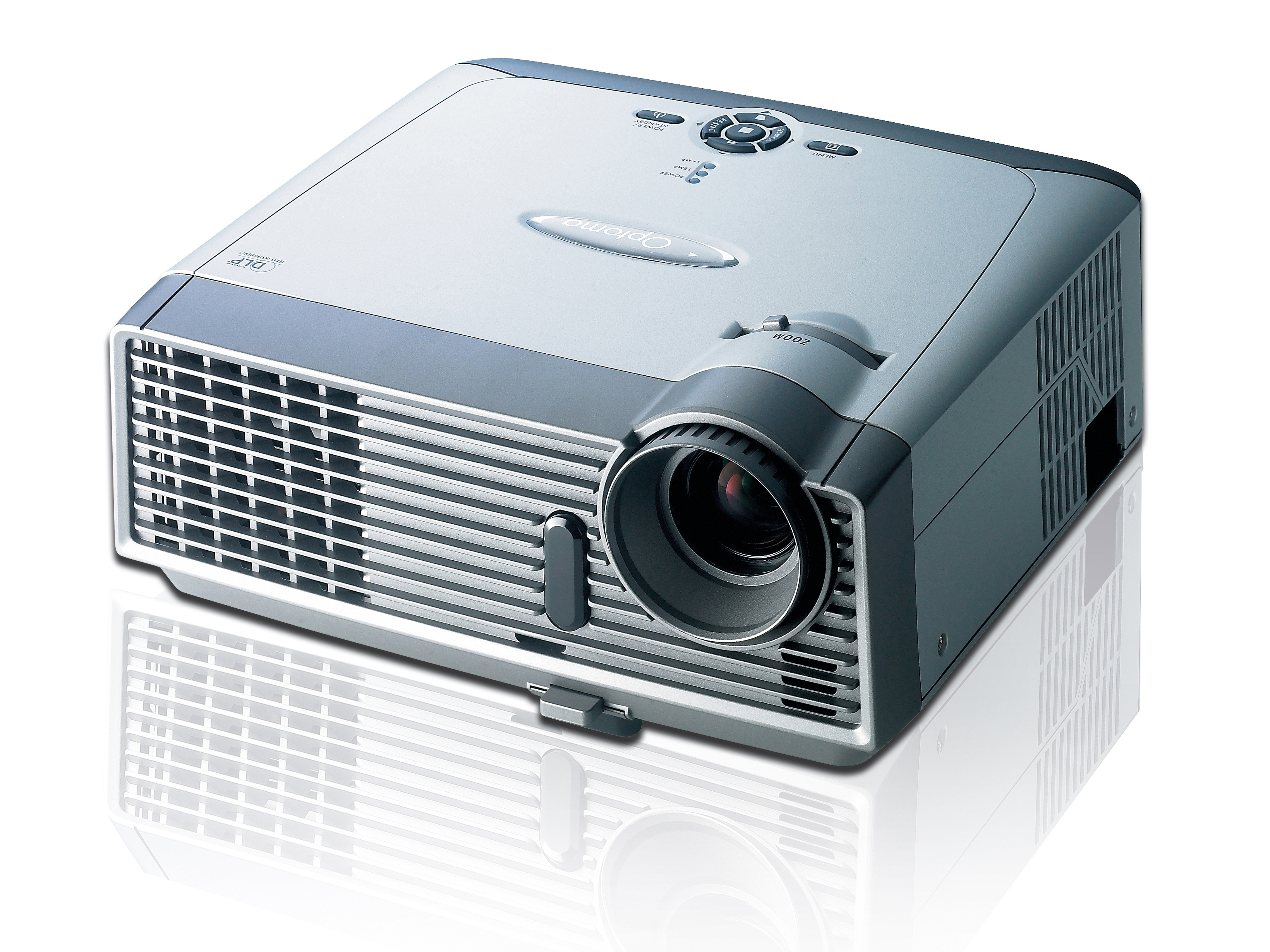TechRadar Verdict
A powerful and accomplished projector that looks good too
Pros
- +
Good looking
Clear and detailed image
Cons
- -
Quite difficult to adjust focus
Why you can trust TechRadar
If the Optoma DX733 was judged on looks and styling alone it would be a hands-down winner. The casing is two-tone silver with a curved bulge to accommodate the lens housing, while the control buttons are neatly and logically laid out. The zoom control is simple to operate. However, the focus ring is tucked in tightly by the lens and is slightly awkward to adjust. The action, however, is smooth and light.
The list of connections is extensive with DVI, dual-VGA, S-video and composite inputs, as well as VGA output and mini jacks for audio in and out. While the composite and VGA cables are conventional, the S-video (male) to VGA (female) cable is unusual, as is the adapter that has a male Scart on one side and female VGA and S-video sockets side-by-side on the other.
The Optoma comes with a remote control that includes a laser pointer, as well as a small, neat carry case that will accommodate some of the cables.
This projector has notably high brightness figures of 2500 ANSI lumens and a contrast ratio of 2500:1. These features combine to produce an image that delivers extremely clear black text on a sharp, clear white background. There are four presets (PC, Movie, Game and RGB) and you can create your own settings.
We found the image was of a reasonably high standard. However, the noise from the Optoma is less intrusive than the Acer, even though the two projectors have a similar noise rating.
Overall, the Optoma DX733 is a powerful machine at a great price.
Tech.co.uk was the former name of TechRadar.com. Its staff were at the forefront of the digital publishing revolution, and spearheaded the move to bring consumer technology journalism to its natural home – online. Many of the current TechRadar staff started life a Tech.co.uk staff writer, covering everything from the emerging smartphone market to the evolving market of personal computers. Think of it as the building blocks of the TechRadar you love today.
